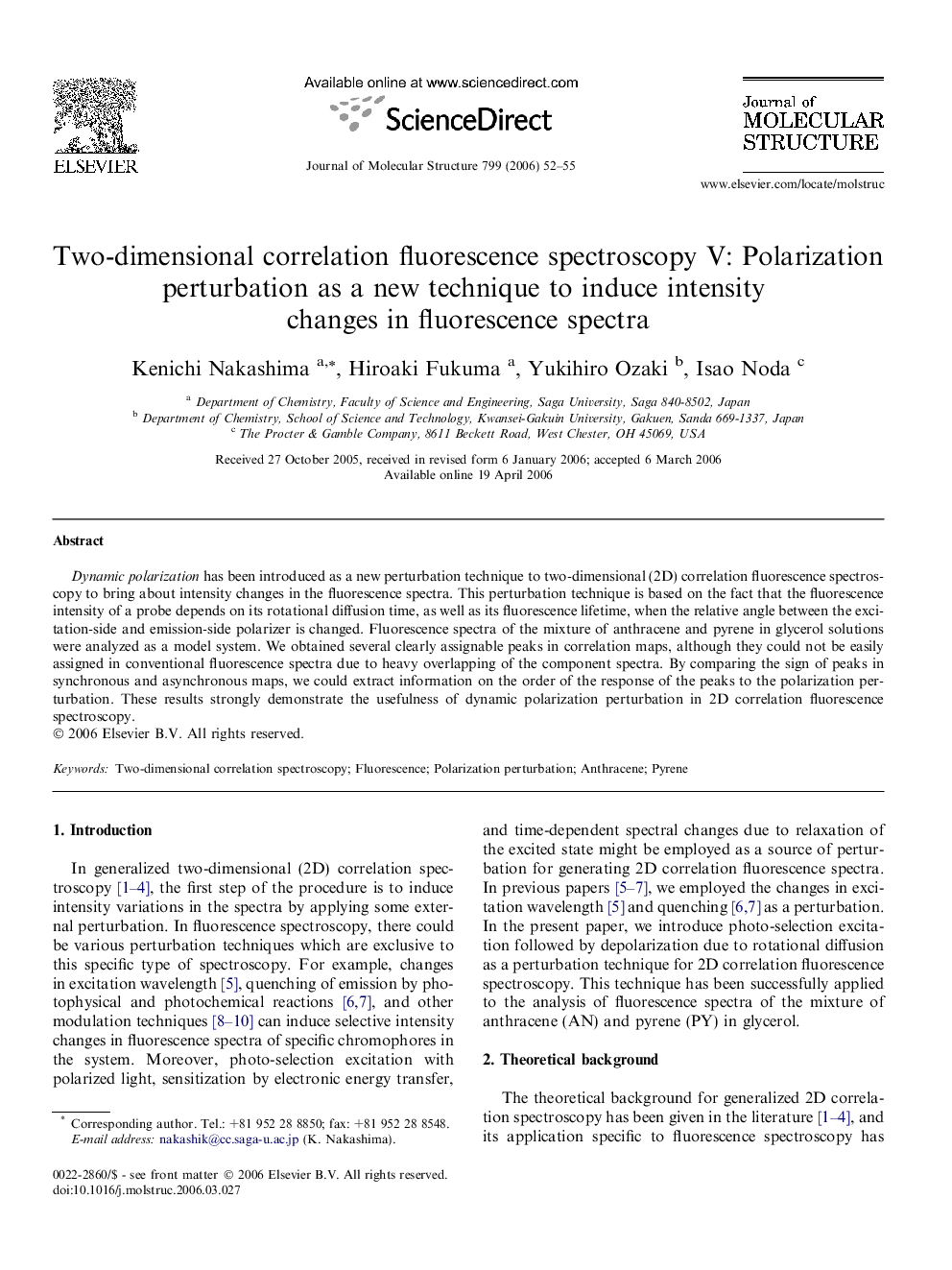| Article ID | Journal | Published Year | Pages | File Type |
|---|---|---|---|---|
| 1408249 | Journal of Molecular Structure | 2006 | 4 Pages |
Dynamic polarization has been introduced as a new perturbation technique to two-dimensional (2D) correlation fluorescence spectroscopy to bring about intensity changes in the fluorescence spectra. This perturbation technique is based on the fact that the fluorescence intensity of a probe depends on its rotational diffusion time, as well as its fluorescence lifetime, when the relative angle between the excitation-side and emission-side polarizer is changed. Fluorescence spectra of the mixture of anthracene and pyrene in glycerol solutions were analyzed as a model system. We obtained several clearly assignable peaks in correlation maps, although they could not be easily assigned in conventional fluorescence spectra due to heavy overlapping of the component spectra. By comparing the sign of peaks in synchronous and asynchronous maps, we could extract information on the order of the response of the peaks to the polarization perturbation. These results strongly demonstrate the usefulness of dynamic polarization perturbation in 2D correlation fluorescence spectroscopy.
